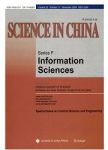版权所有:内蒙古大学图书馆 技术提供:维普资讯• 智图
内蒙古自治区呼和浩特市赛罕区大学西街235号 邮编: 010021

作者机构:Key Lab of Intelligent Analysis and Decision on Complex SystemsSchool of ScienceChongqing University of Posts and Telecommunications Key Lab of Intelligent Air-Ground Cooperative Control for Universities in ChongqingCollege of AutomationChongqing University of Posts and Telecommunications Department of Complexity SciencePotsdam Institute for Climate Impact Research Institute of PhysicsHumboldt University of Berlin
出 版 物:《Science China(Information Sciences)》 (中国科学:信息科学(英文版))
年 卷 期:2025年第68卷第2期
页 面:151-169页
核心收录:
学科分类:0711[理学-系统科学] 07[理学] 08[工学] 081101[工学-控制理论与控制工程] 0811[工学-控制科学与工程] 071102[理学-系统分析与集成] 081103[工学-系统工程]
基 金:jointly supported by National Natural Science Foundation of China (Grant No. 62373071) Natural Science Foundation of Chongqing,China (Grant Nos. CSTB2023NS CQ-LZX0075, cstc2019jcyj-msxmX0102) Research Program of Chongqing Talent,China (Grant No. cstc2021ycjh-bgzxm0044) 2023–2024 Higher Education Science Research Project of Chongqing Higher Education Association (Grant No. cqgj23047C)
主 题:formation tracking control region constraints repulsive potential function event-triggered mechanism
摘 要:In this paper, an event-triggered time-varying formation tracking control for a class of second-order nonlinear multiagent systems(MAS) operating within a constrained region is investigated. To mitigate the negative effects of external unknown disturbance, a novel disturbance observer with performance guarantees is proposed, enabling precise disturbance *** the artificial potential field(APF) method, a repulsive potential function is introduced to prevent inter-agent collisions as well as collisions with environmental obstacles. To reduce continuous communication and frequent system updates, a sliding mode technique is incorporated into the formation tracking controller, utilizing an event-triggered mechanism. The controller is also applicable to the formation control of MAS in switching-constrained regions. The achievement of the specified timevarying geometric formation is rigorously demonstrated through the Lyapunov framework. Numerical simulations are presented to validate the effectiveness of the theoretical results.